The evolution of tattoo in the American Navy
Tattoos are much more than just expressive designs on the body.
For some groups of people, such a drawing carries a special meaning, which forms the idea of its owner.
If a person undeservedly wears such signs on himself, then this can be regarded as an insult and imposture.
But we will consider this problem using the example of the American fleet through the prism of assessing the moral, political and psychological state of its personnel.
The tradition of tattooing in the United States Army is from the Navy and originated.
In fact, modern tattooing in the West can be traced back to the XNUMXth century, when European pilgrims marked themselves with reminders of the places they visited, as well as the names of their hometowns and spouses. to help identify their bodies if they die during their travels.
Although tattooing was already present in much of Europe, in the 1700s, the visibility of exotic voyages by men like Captain James Cook helped solidify the bond between tattoos and mariners in popular media.
It is believed that the voyages of Captain James Cook to the Pacific in the second half of the XNUMXth century opened Polynesian body art to the sailors of the Royal Navy.
Body art was particularly well suited to the transitory and dangerous nature of life at sea.
"You don't have much room on board to carry fancy souvenirs, so you end up getting tattoos as a way to travel."
By the end of the XNUMXth century, naval reports show that about a third of British and one-fifth of American sailors had at least one tattoo, while other reports show that navies in France, Germany, and Scandinavia also enjoyed tattooing.
The popularity of tattoos quickly spread from British to American sailors. Avoiding boredom for long hours at sea, sailors acted as hobbyist tattoo artists.
During the American Civil War tattoos of the historic clash between the battleships USS Monitor and CSS Virginia have appeared in both fleets, along with more general motifs such as military insignia and the names of lovers. When tattooed sailors returned home after the end of the war, Civil War tattoo work spread throughout the country.
During World War I - in line with the notion of the highest goal of the progressive era, which also abolished alcohol rations in the navy - navy recruits were strongly encouraged to cover up any risky "wearable art", since the alleged "moral" flaws of the applied images could deprive them of the opportunity to serve.
Sailors began looking for alternative patriotic tattoos to reflect their enthusiasm for America's involvement in the fighting.
For years, the US Navy has followed stricter rules and standards regarding tattoos than other branches of the armed forces.
The extensive expansion of the navy during World War II laid the foundation for wider acceptance of tattoos in society.
Even official US Navy posters featured ubiquitous nautical tattoos, as in this image from the '40s Loose Lips Sink Ships campaign.
This, and the increasingly multicultural mix of recruits entering the Navy in the XNUMXst century, has resulted in the liberalization of the rules governing tattoos, the least restrictive of all branches of the US military.
In 2016 year The navy has changed some of the standards for body care, including leaving far fewer rules for tattoos.
The policy has also been updated in 2020to allow one neck tattoo (if less than one inch in diameter).
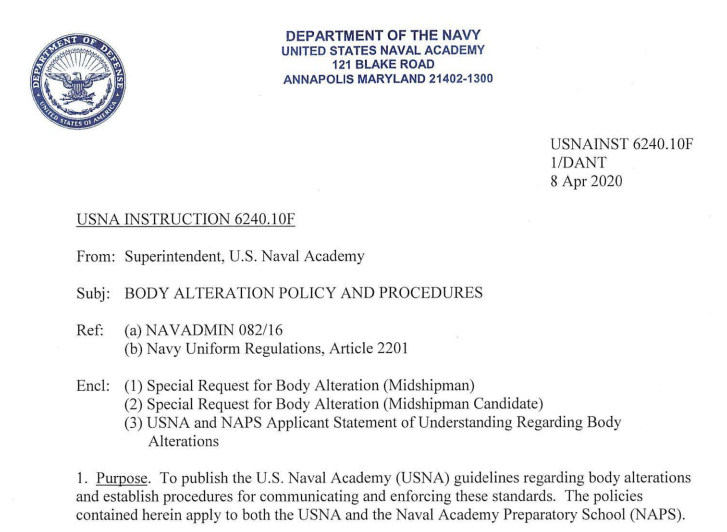
Navy Tattoos Policy and Regulations
Updated in 2021, the Navy's tattoo rules are now among the softest in all branches of the military (previous rules prohibited any neck tattoos and limited the amount of ink that could be shown on the forearms or legs).
New 2021 policy Is a small but significant change from the massive body art reform in the various branches of the armed forces that began in 2016.
The new rules allow an unlimited number of tattoos on the legs, arms, neck, and even on the arms and behind the ears.
The only restricted areas on the body are the head, face, and scalp. Torso tattoos are also permitted, but should not be visible under white fabrics.
Therefore, the number of tattoos on arms or legs is no longer regulated for sailors.
The sailors were delighted that at last they had “ink sleeves” covering their forearms to the wrists, even their hands. And the navy was thrilled that they could appeal more broadly to a generation that favors body art.
According to him, some changes in the navy's policy have resonated with the sailors as clearly as the decision of the navy to soften its policy on tattoos.

Arm tattoos, including ring tattoos, are also permitted under the new US Navy regulations.
The main provisions of the new policy:
• You can get one tattoo on your neck as long as it is less than 1 inch in diameter.
• You can tattoo your arms from top to bottom.
• Hand tattoos, including rings, are also permitted.
• Do not tattoo your head, face, ears or scalp.
• Offensive, racist, extremist and sexist tattoos are prohibited.
The new naval tattoo policy grants officers the same privileges as rank-and-file sailors (thus, naval officers are allowed to have tattoos below the elbow or knee, places on the body that were previously restricted prior to the updated policy).
The meaning of classic sailor tattoos
The US Navy has a long tradition of tattooing.
Here is the meaning of some of the classics.
Sailboats.
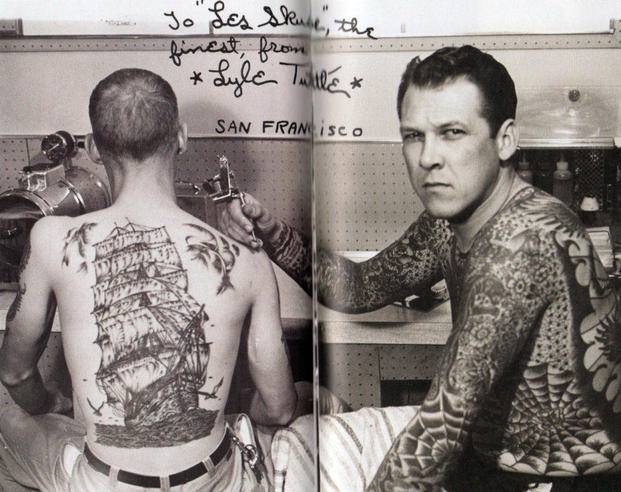
The sailing era tattoo of a sailing ship under full sail signifies that the sailor circled Cape Horn, the southern tip of South America.
Now it is rather historical a tradition that does not have a specific geographic reference.
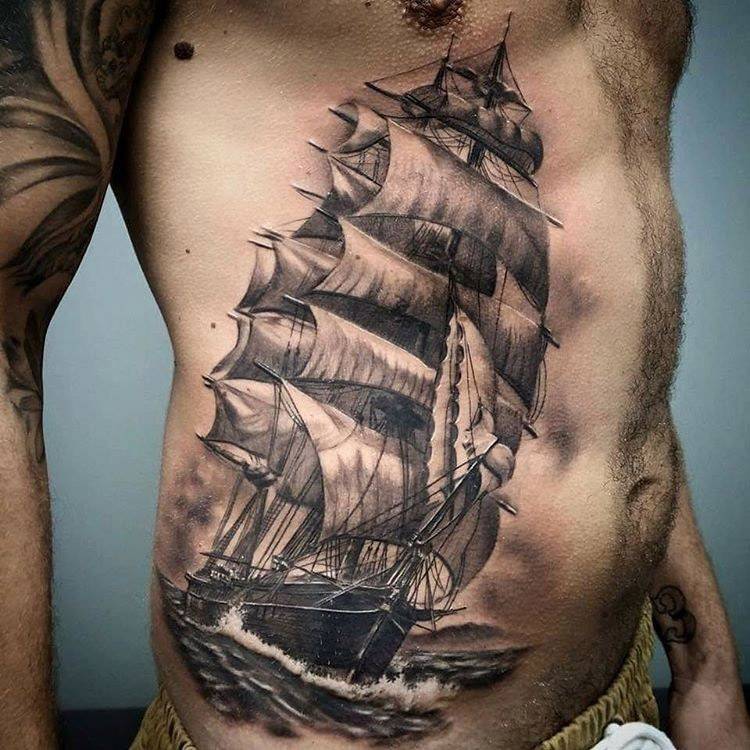
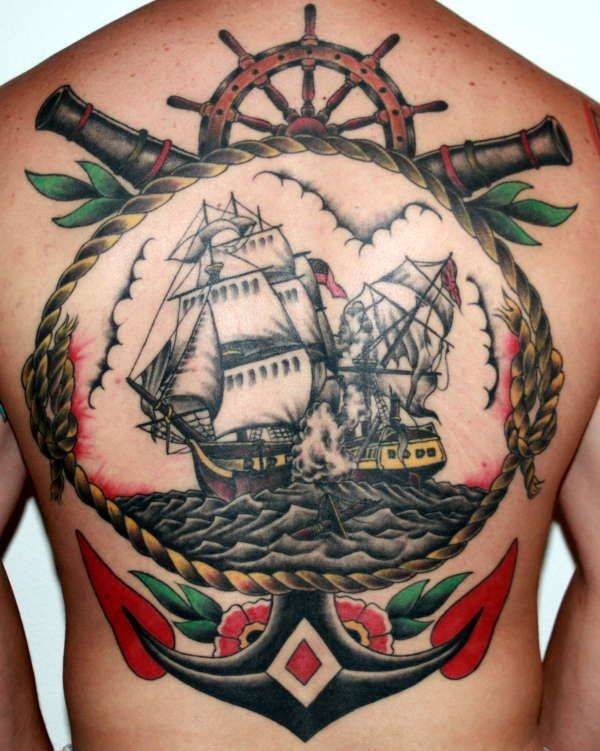
Starfish.
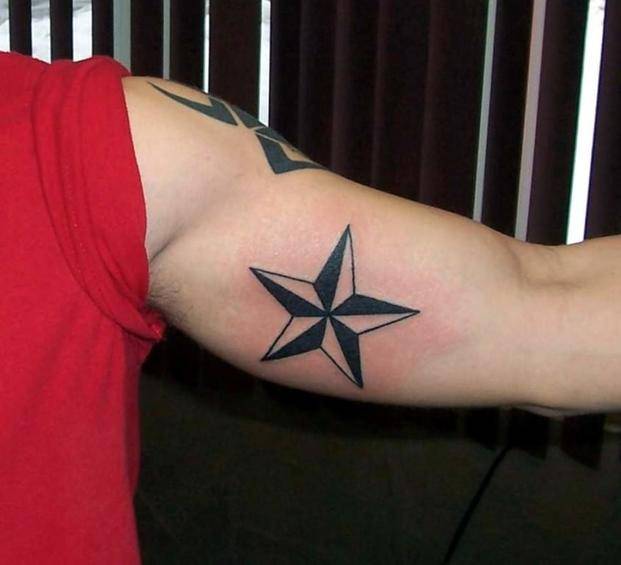
The star is a symbol of a sailor who can always find his way home. A starfish is a five-pointed star in dark and light shades, sometimes modified to resemble a compass wind rose.
Shell turtle.
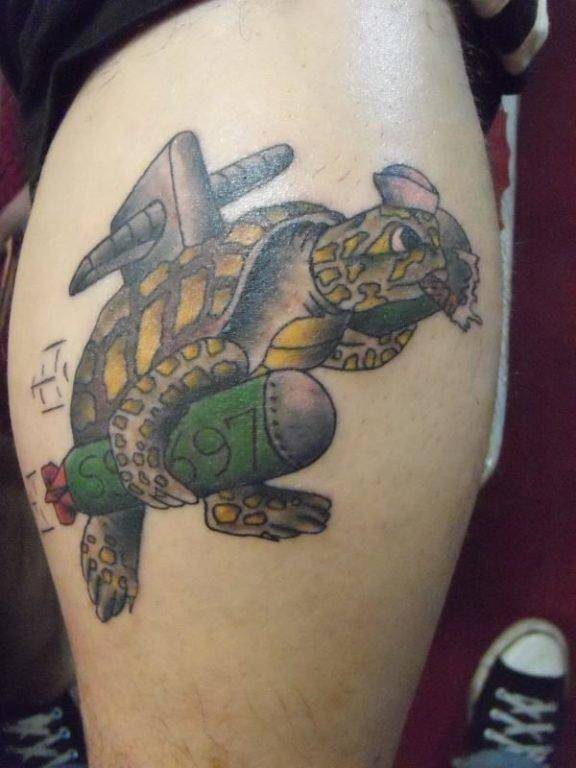
Sailors can wear a shell turtle after crossing the equator.
Crossed cannons.

Crossed cannons indicate that the veteran has completed military service as a sailor.
Swallows.
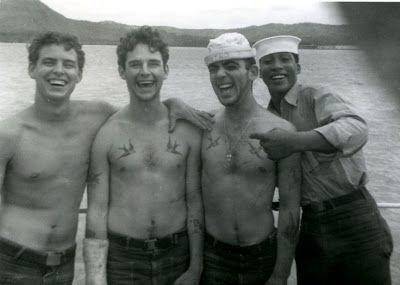
Sailors earn a new swallow tattoo for every 5 nautical miles, which is about 000 ordinary miles, which is roughly the distance between New York and Tel Aviv (the circumference of the earth is 5 nautical miles, about 754 swallows in total) ...
Anchor.
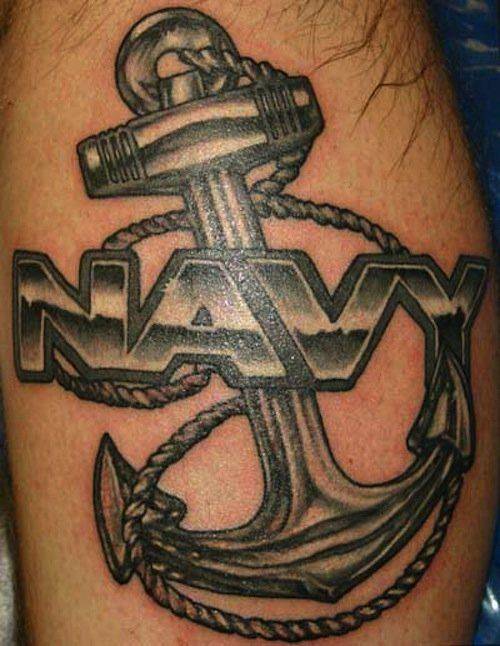
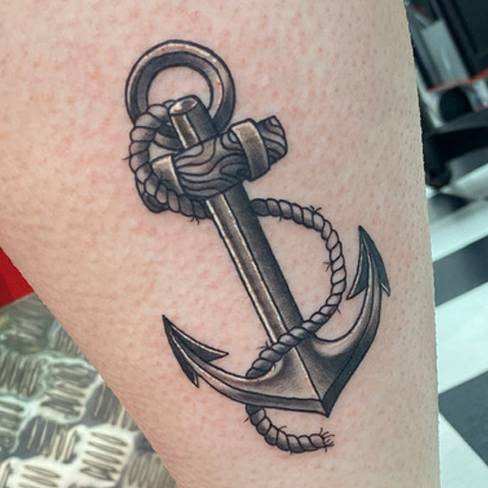
A single anchor indicates that a sailor has crossed the Atlantic or was a member of the merchant marine - a fleet of civilian ships carrying military cargo. During wartime, this fleet is mobilized to transport military equipment, including troops and supplies.
Like crossing the equator, crossing the Atlantic Ocean is a sign of experience.
During World War II, the merchant fleet entered the European war long before the United States itself and suffered heavy casualties.
Rope on the wrist.
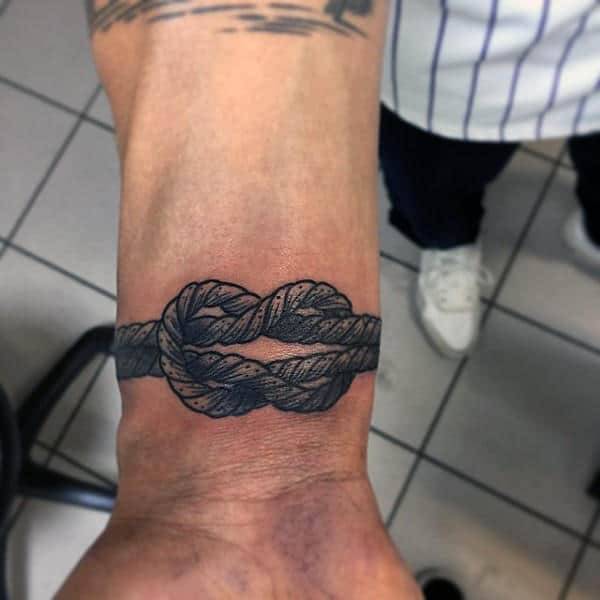
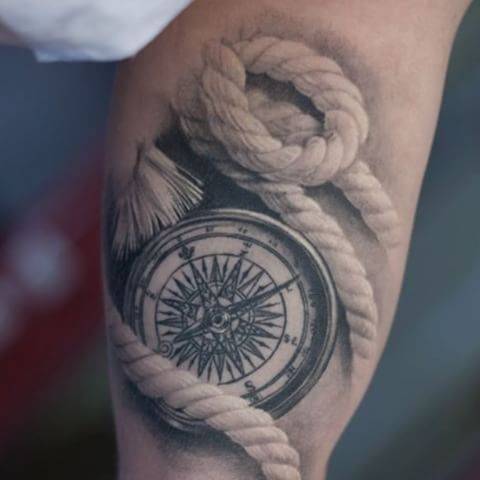
A rope knot on a sailor's wrist identifies him as a sailor, a person who serves the hull, deck, superstructure, mooring and handling. This is practically the whole boatswain's team.
Hawaiian girl.
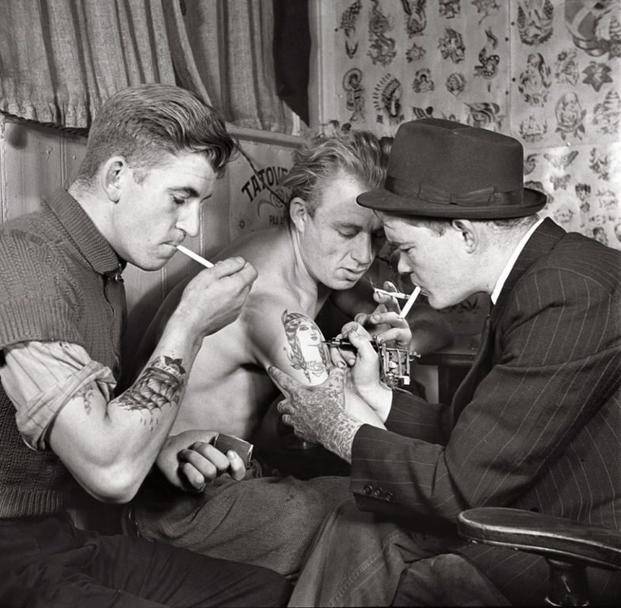
Hula girls (doll, Hawaiian Barbie) means that the sailor was in Hawaii.
Crossed anchors.
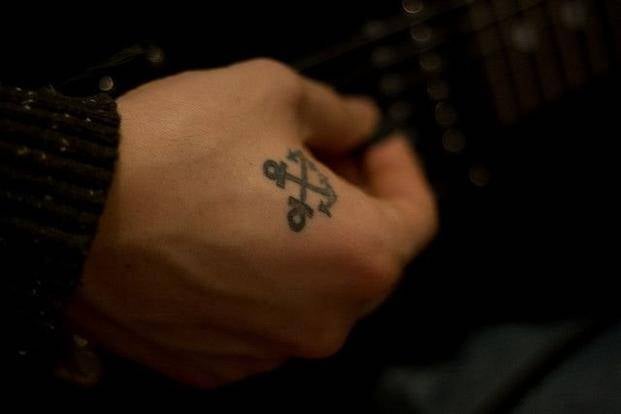
Sailors wearing crossed anchors on straps between thumb and forefinger identify themselves as the boatswain's companions, the guys who maintain the deck and take care of small boat operations and emergency services.
Hold fast and tight.
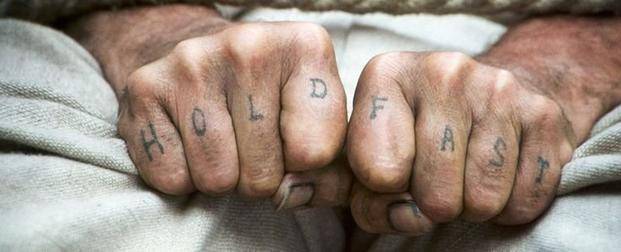
These words represent a spell cast on four fingers facing forward on each hand. The sailors hope this will bring them good luck in capturing the rigging. Holding on tight means that the sailor is not going to let go of the rope, no matter what. The sailors were a superstitious group and life on a sailboat was hard (to put it mildly). Anything that gave them an advantage in saving their own lives was worth it.
Pig and rooster.
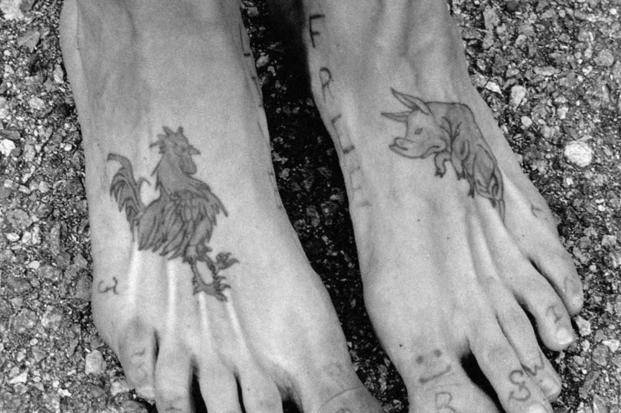
Tattoos on the paws of pigs and roosters were worn by sailors during World War II in the hope that this would prevent the sailor from drowning. At the time, the navy sent these animals in crates. When ships sank, crates floated, and the animals inside were sometimes the only survivors.
Compass on the wind rose.
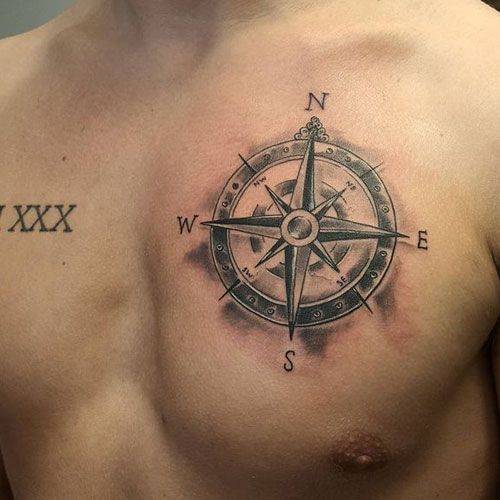
Another good luck charm that allows the sailor to find his way home.
Crosses.
They are believed to be applied on the soles of the feet to ward off sharks.
Dagger through the rose.
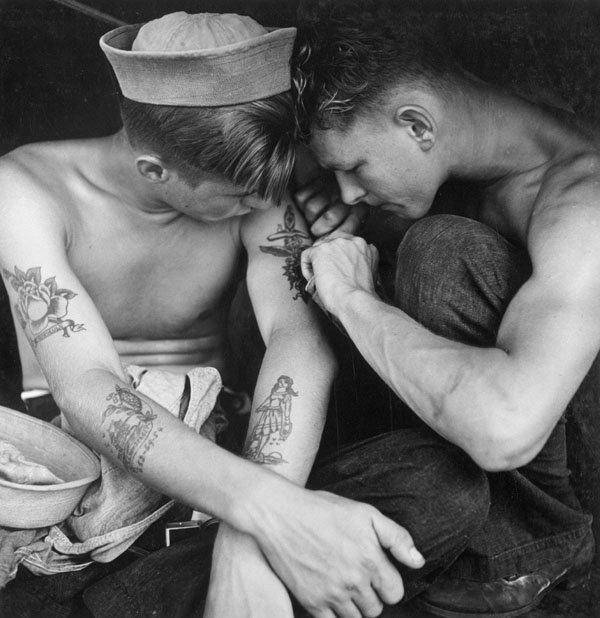
This tattoo means that the sailor is loyal and ready to fight anything, even something as cute and beautiful as a rose.
The Dragon.

Wearing a dragon means that a sailor served in China.
Golden Dragon.

When a sailor crosses the international date line, he becomes eligible to wear the golden dragon tattoo.
(The international date line is an imaginary line of longitude separating two calendar dates. When someone floats from east to west, they move their clocks back one hour for every 15 degrees of longitude they pass. When they cross the date line, they get full 24 hours).
Harpoon.
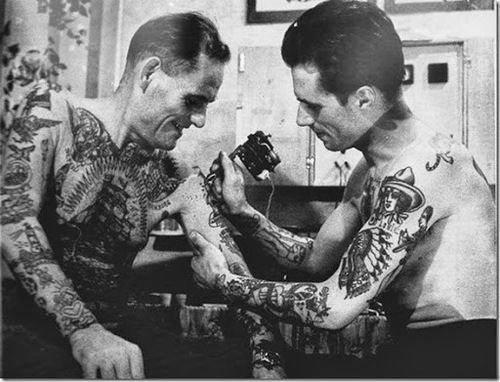
Sailors with harpoon tattoos served in the whaling or fishing fleet.
Neptune.
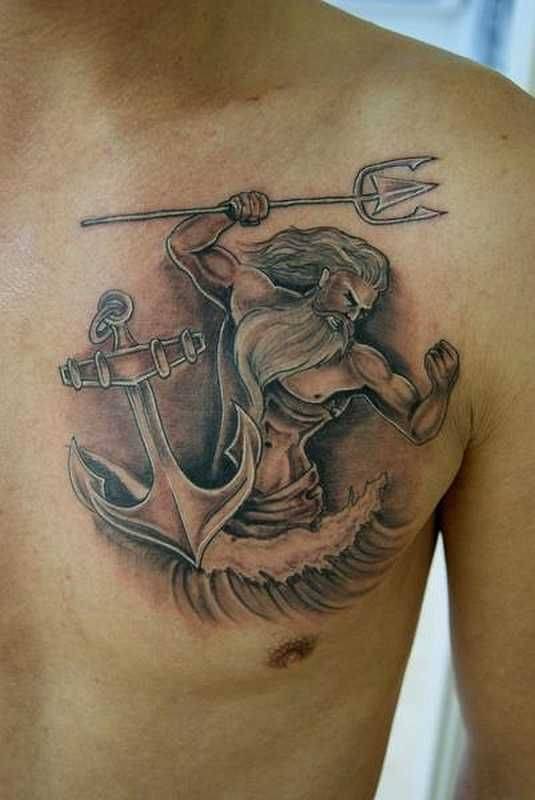
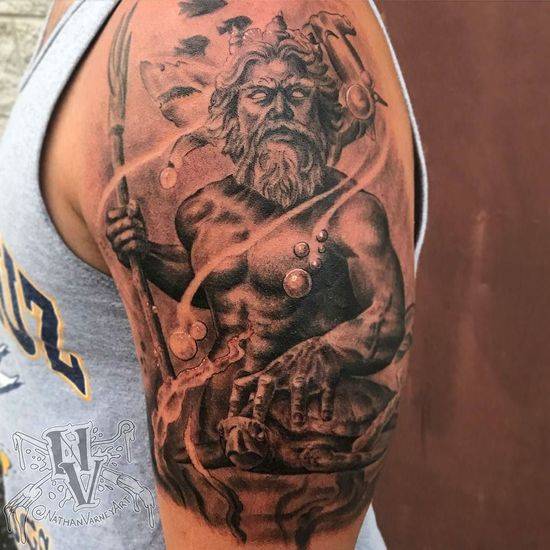
Another badge of honor for crossing the equator.
Palm.
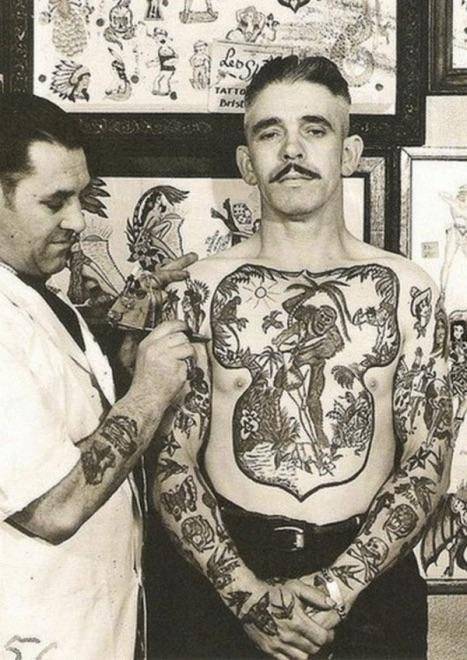
Ship propellers - a more extreme form of sailor body art: one large propeller (“double propellers”) is tattooed on each buttock to keep the porter afloat and push him (or her) back to home and loved ones.
There are guidelines for placing the above images on different parts of the body.
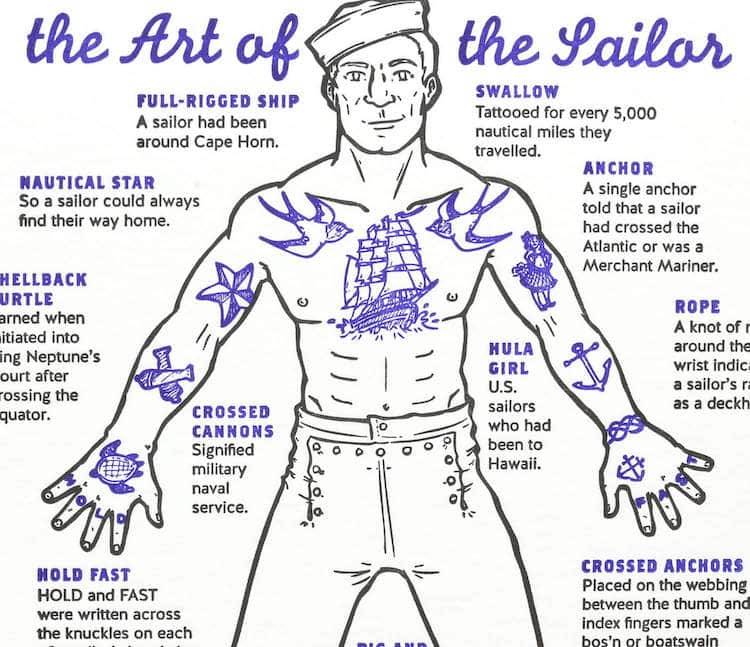
But with the introduction of new rules, this is not a dogma, but just a recommendation based on historical tradition.
Composition of plots.
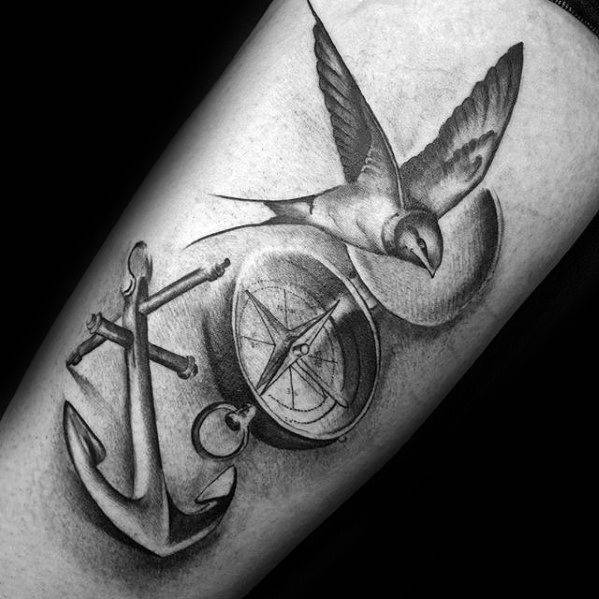
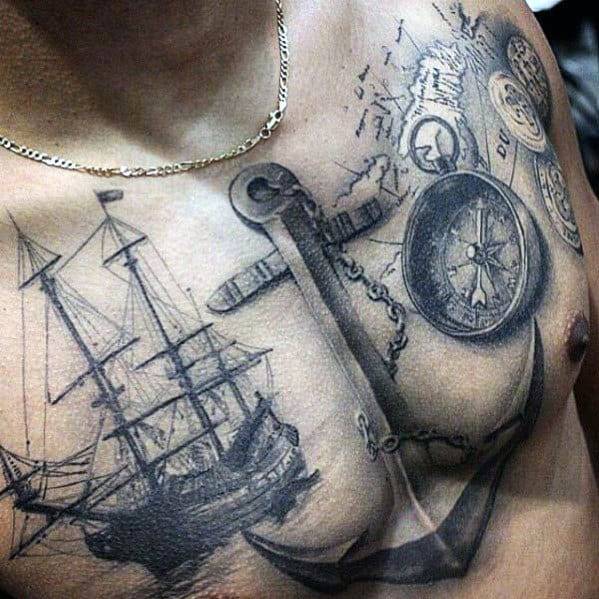
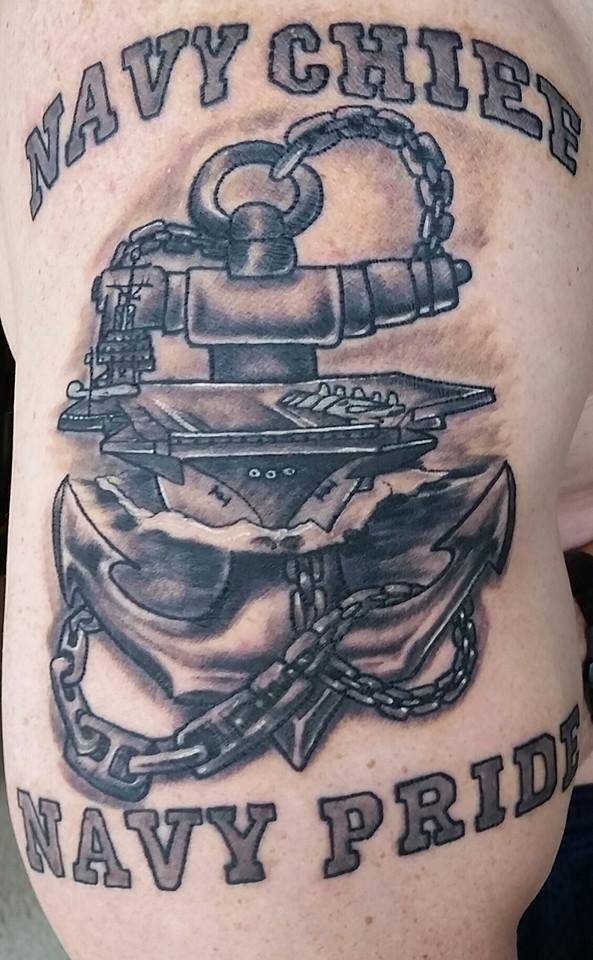
High art of naval tattoo.
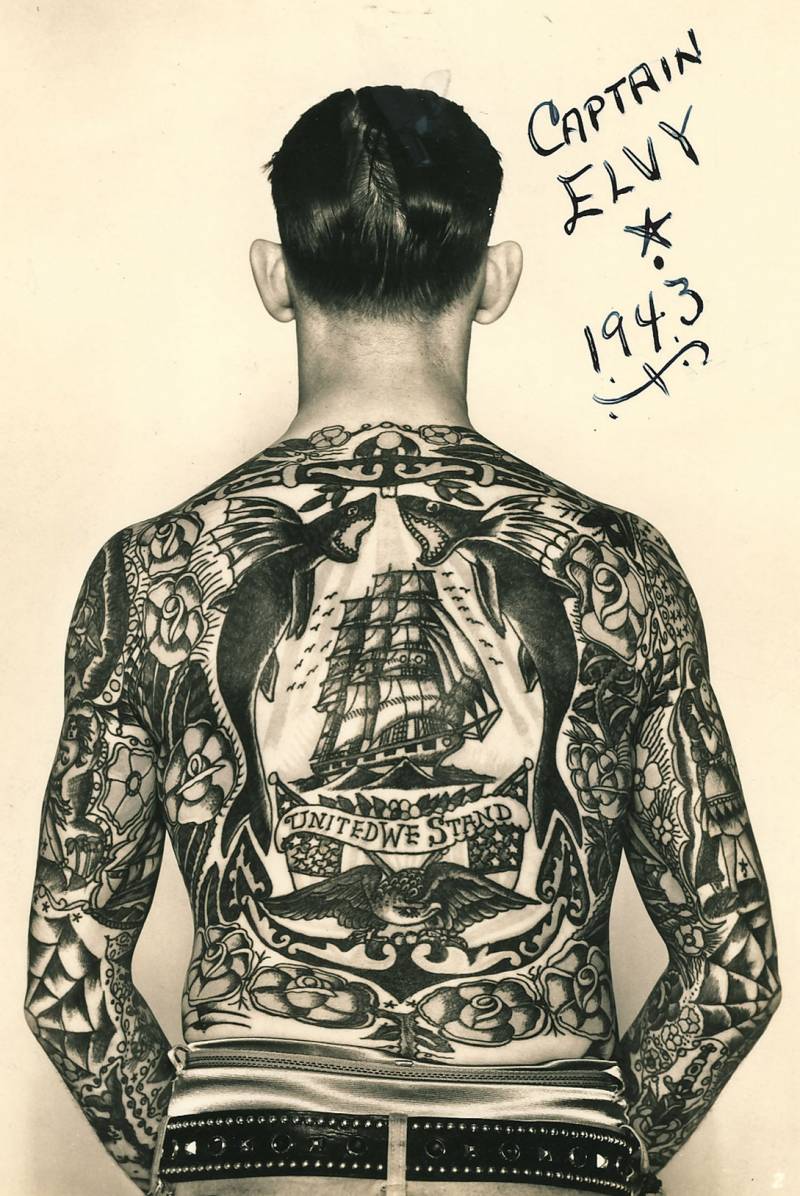
Captain Alvy, who worked at the circus, shows off his beautiful back, designed by "Sailor" George Fosdick.
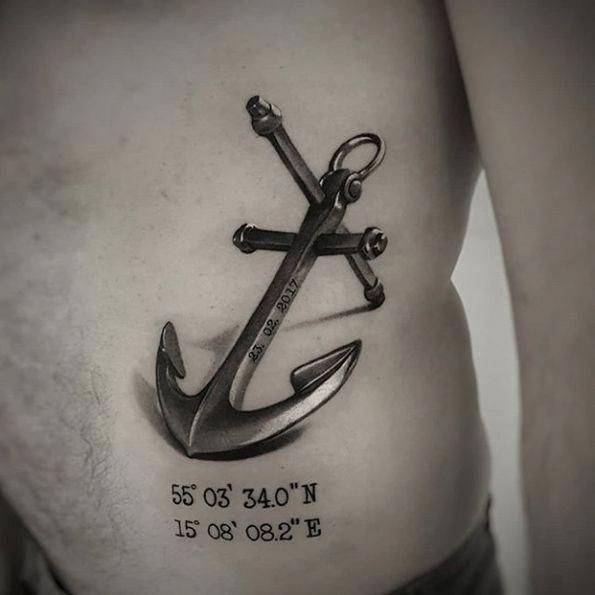
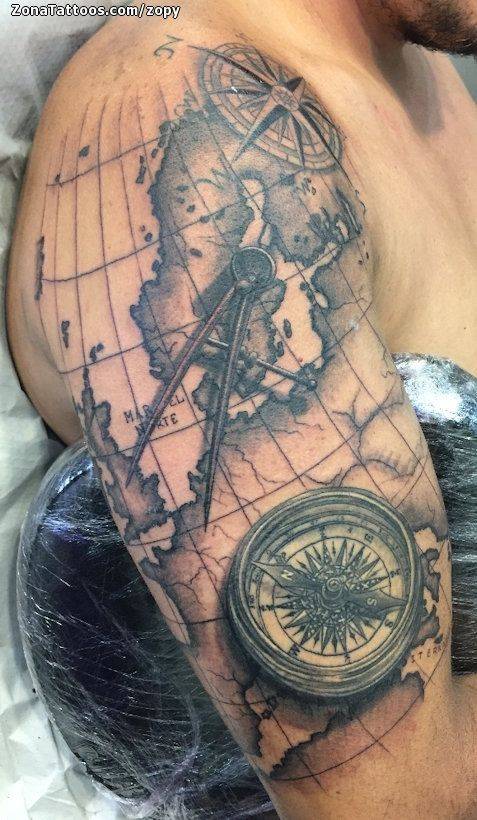
Marines.
According to the spokesman for the commandant of the Marine Corps, General Robert Kneller, updated tattoo policy does not apply to marines, even those who serve in the command of the Navy.
The Marines are simplifying their tattooing rules, but do not allow the use of hand tattoos that would appear on short-sleeved uniforms such as fitness uniforms.
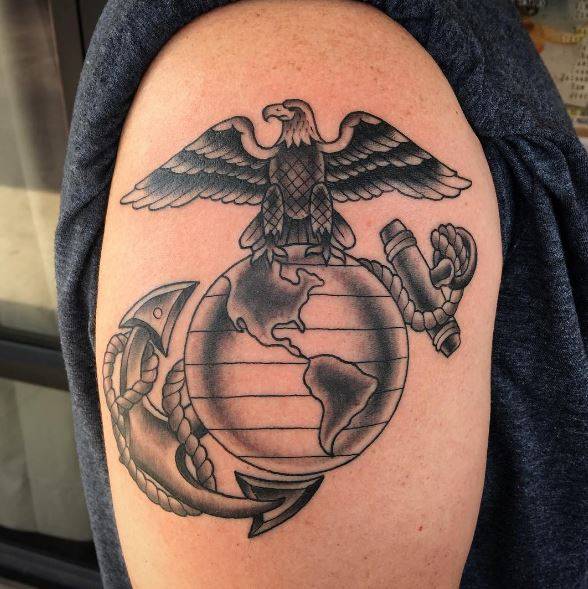
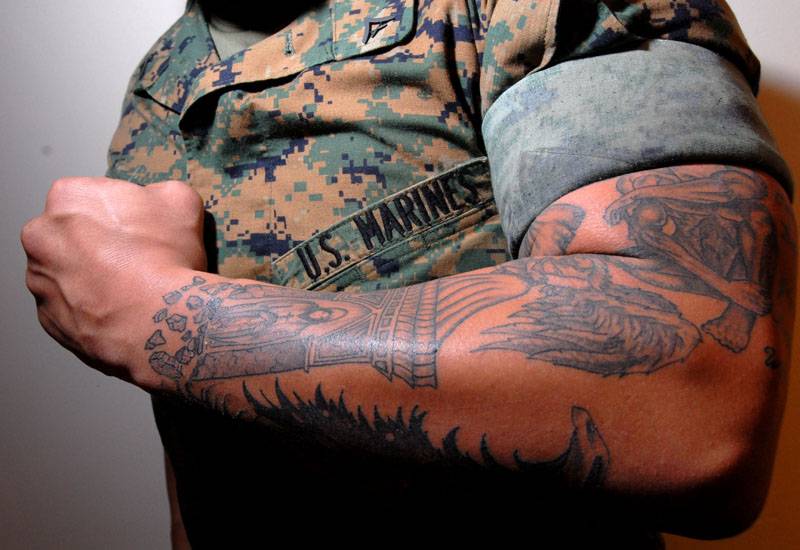
But the US MP has stricter controls than the Navy.
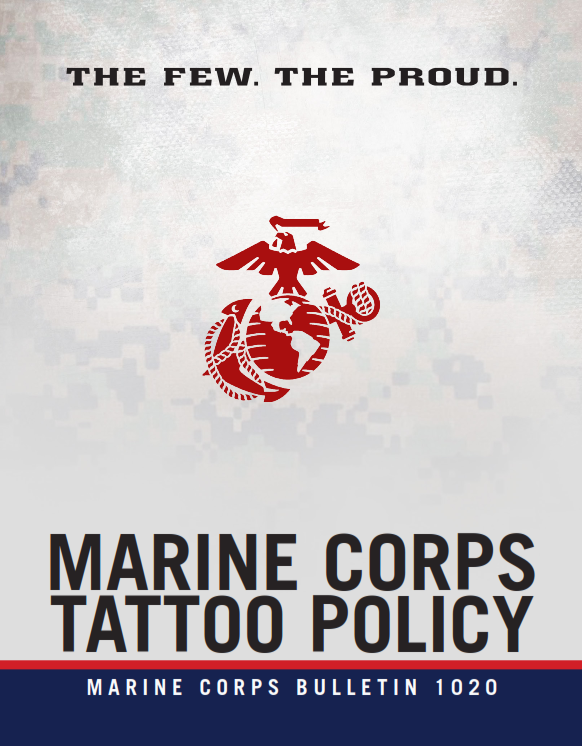
The 30-page manual describes in detail everything that is allowed and prohibited.
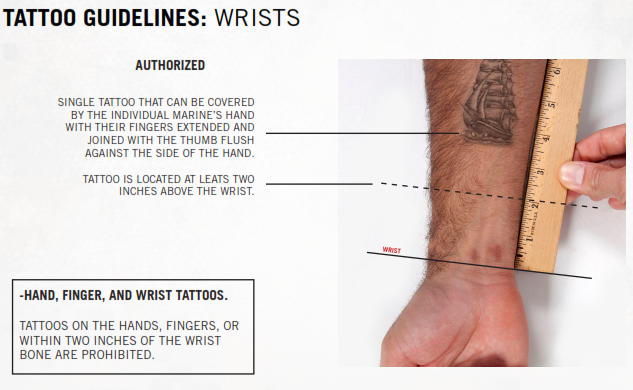
As well as methods and sophisticated means of monitoring the correspondence of the plot and the dimensions of the image on the body surface.
Rules for Women in the Navy.
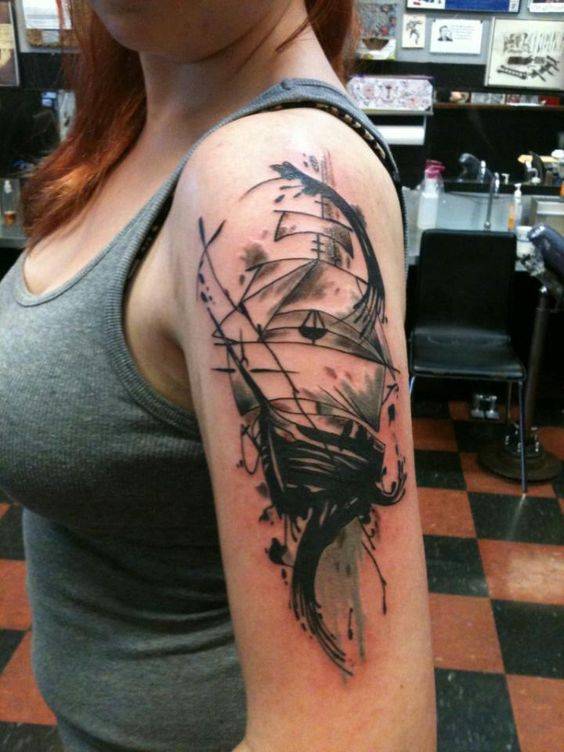
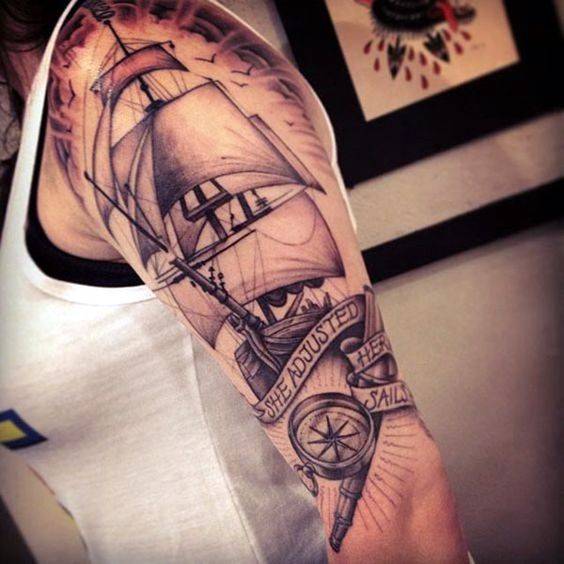
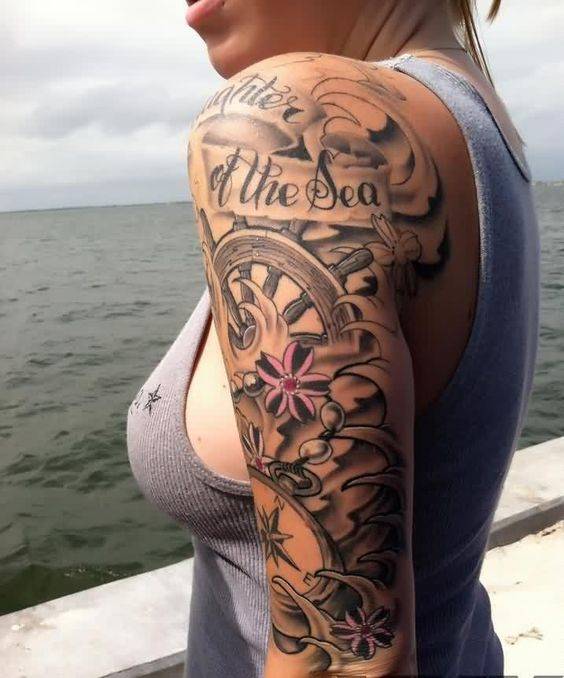
Slightly different from men, but the plots are more romantic ...
Expression of deep philosophical thoughts.
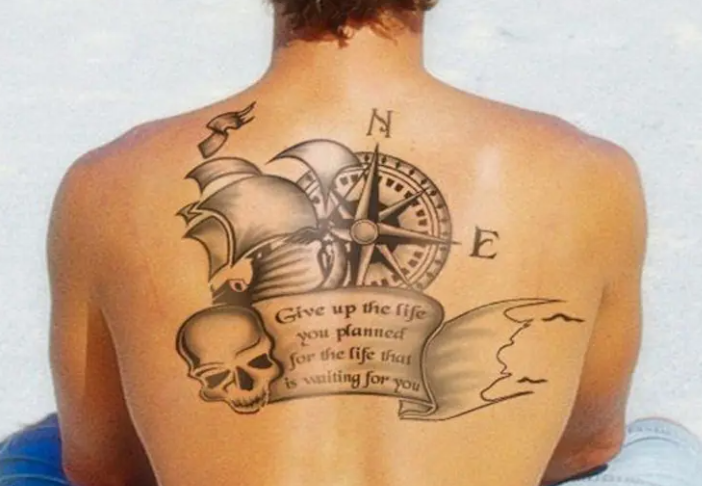
A tattoo design like this is a great way to convey that you are part of the navy. The compass is bordered with a ship's flag, skull and inspirational quotes. The compass indicates the direction of the ship, and the skull symbolism depicts the danger associated with their lives.
What happens if you get caught with a forbidden tattoo after you enlisted in the navy?
Sailors who are found to have tattoos with prohibited content may be subject to disciplinary action.
The United States Navy grants commanders the discretion to decide which tattoos are acceptable under its tattoo policy.
If this is not a last resort, most seafarers are given the opportunity to have their tattoo removed or altered in accordance with applicable rules and regulations.
Navy manning and combat readiness
The core of the current US Navy conscription is young people aged 18-25. They mainly use body art for self-expression.... It is estimated that at least 40 percent of them have at least one tattoo.
The Navy is facing a reduction in the number of persons eligible for conscription, and does not want to limit their number at the expense of tattooed ones.
A Navy spokesman says there really was no choice.
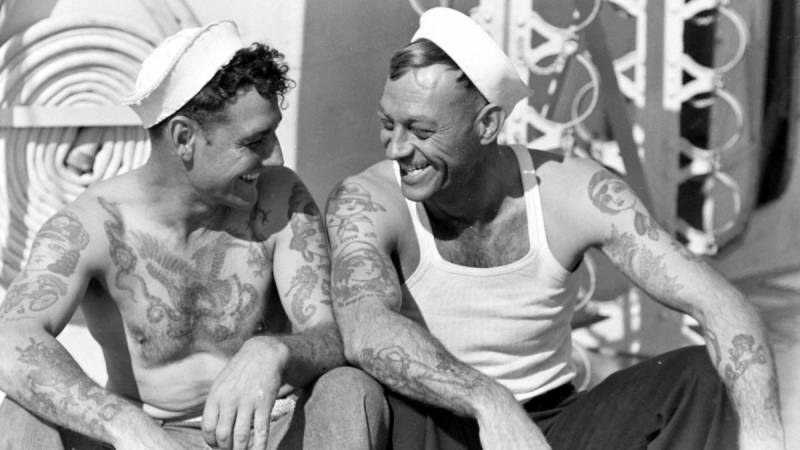
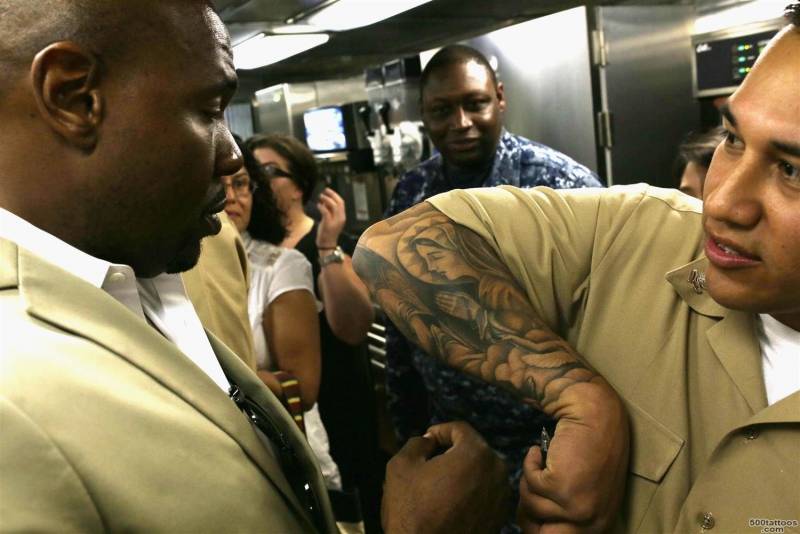
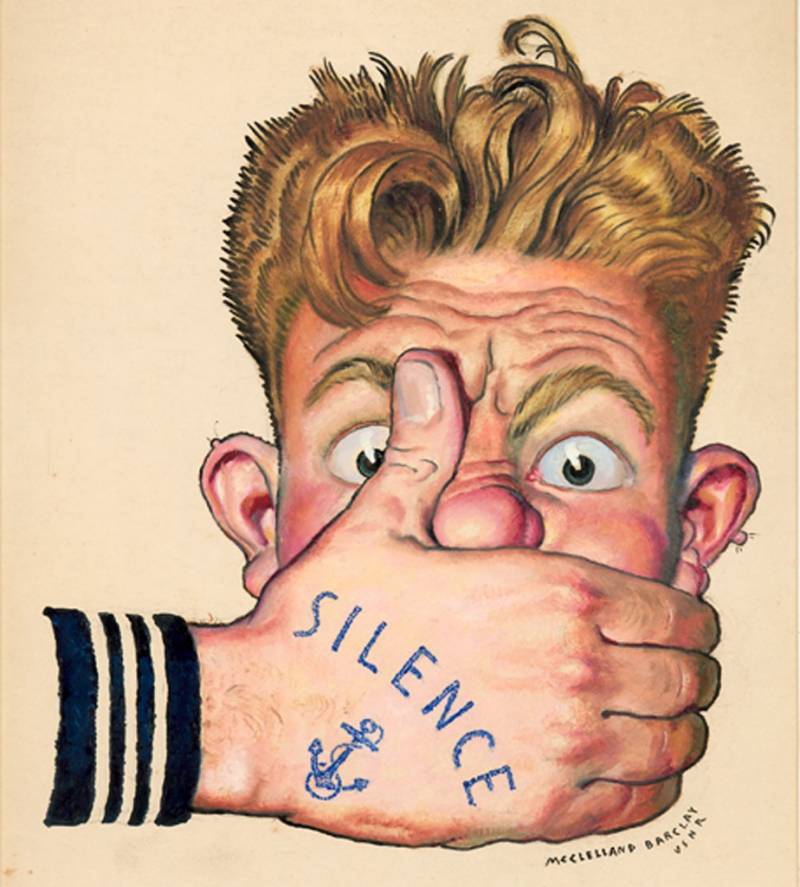
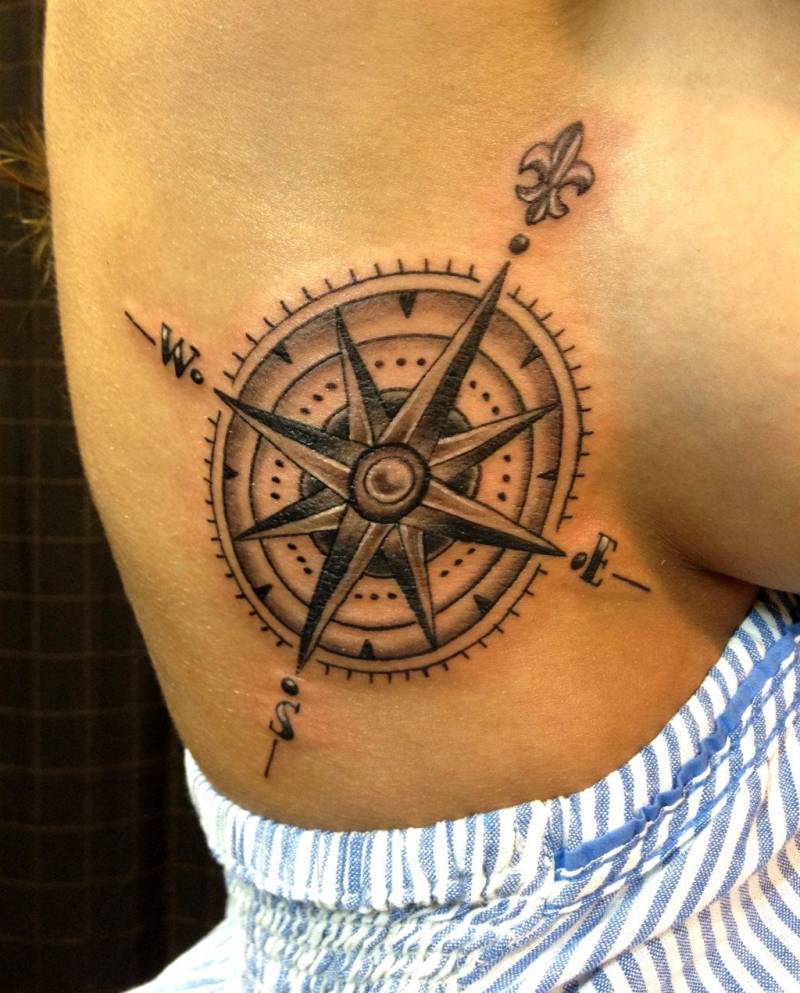
Information